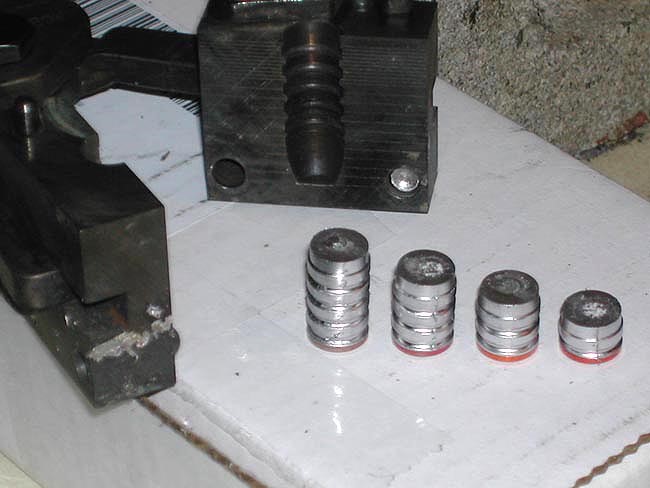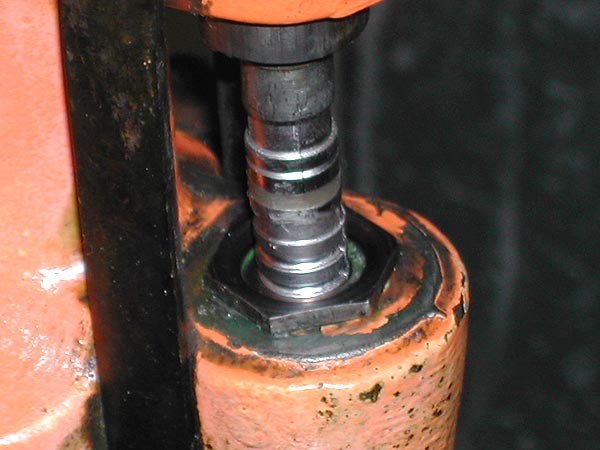Menu
casting wadcutters to order
The full range of wadcutters that can drop from this particular mold are shown in Figure 6.
In this particular instance the bullets drop from the mold with a diameter of .459. This dimension permits them to be used in a .458 rifle bore, for example a .45-70. The bullets may also be sized down to as small as .452 for use in handguns. While some writers have advised against sizing a cast bullet more than .005, I have never had any problems from doing so in this particular application. Your mileage may vary.
Sizing the Cast Wadcutter
Sizing your new bullets isn't complicated, but may require a little extra care. The problem I encountered was the top punch; I didn't have a flat one. If you have a flat top punch, you can put it in your sizer and go to town. Likewise, the Lee push-through sizer sets work great for sizing these bullets.
Not having a flat nose punch for my Lyman 450, I improvised. I put in the nose punch for a Lyman Keith .45 bullet, then inserted just such a bullet to use for a top punch. The result works beautifully, even in sizing the bullet down to .452 for use in .45 ACP.
Sized and lubed, the wadcutter is now ready for loading.
Loading the Full Wadcutter
Unless you're loading for .38 Special, you'll find that load data for full wadcutters is pretty scarce. In working up loads for .45 ACP, I used one principal rule, which was "Don't blow yourself up."
Luckily for me, my custom wadcutters fell right in the middle of the standard weight range for .45 ACP bullets, and so I was able to find a wealth of data for cast bullets of the same weight. This is the approach you should take in determining what loads to try with your new custom-cast bullets. What you ultimately decide to do with them, of course, is up to you.
WARNING: Full wadcutters have the most bearing surface of any bullet profile, and therefore the most friction in a gun bore. Consequently as you work up loads, pressure will rise more quickly with wadcutters than with other profiles.
Because of my concerns about pressure and my respect for my principal rule (again, "Don't blow yourself up"), I stayed with starting loads out of manufacturers' manuals. It was also my practice to crimp into the top driving band, rather than over the front of it, thus yielding a hair more powder volume and so further reducing pressure. Leading wasn't an issue, as pressures are low and anyway there's a gas check in the mix. My Smith & Wesson model 1917 and I were quite happy with the result, and most likely you will be too.
Proudly powered by Weebly



